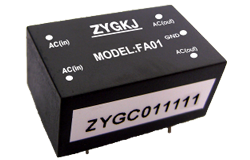noticias
Converting 110V AC to 12 Volt DC: A Step-by-Step Guide
Autor: Módulo de potencia ZYG Time: 2023-5-14
Converting 110V AC to 12 Volt DC: A Step-by-Step Guide
Converting 110V AC to 12 Volt DC is a process that is commonly used in various electronic devices such as radios, televisions, and computers. The process is simple and straightforward, but it requires the use of certain tools and equipment. In this guide, we will take you through the process of converting 110V AC to 12 Volt DC.
Step 1: Gather the Required Tools and Equipment
To begin with, you will need certain tools and equipment to convert 110V AC to 12 Volt DC. The following are the tools and equipment that you will require:
– A transformer
– A rectifier
– A capacitor
– A voltage regulator
– A soldering iron
– Solder
– Wire cutters
– Wire strippers
– Electrical tape
Step 2: Identify the Input and Output Voltage Requirements
Before you can start with the conversion process, you need to identify the input and output voltage requirements of the device you want to power with the 12 Volt DC power supply. This information is usually found in the device\’s manual, or it can be obtained from the manufacturer\’s website.
Step 3: Choose the Transformer
The transformer is an essential component in converting 110V AC to 12 Volt DC. It is used to step down the voltage from 110V AC to 12V AC. You need to choose a transformer that can handle the required input and output voltage requirements. The transformer should have a voltage rating of 110V AC on the primary side and 12V AC on the secondary side.
Step 4: Choose the Rectifier
The rectifier is used to convert the 12V AC output of the transformer to 12V DC. The rectifier should be able to handle the required output voltage and current requirements. You can choose a bridge rectifier, which is a four-diode rectifier that is commonly used in converting AC to DC.
Step 5: Choose the Capacitor
The capacitor is used to smooth out the DC output of the rectifier. It should have a voltage rating that is higher than the output voltage of the rectifier. You can choose an electrolytic capacitor, which is commonly used in DC power supplies.
Step 6: Choose the Voltage Regulator
The voltage regulator is used to regulate the output voltage of the power supply to the required voltage. You can choose a linear voltage regulator, which is commonly used in DC power supplies.

Step 7: Connect the Components
Once you have chosen the components, you need to connect them as follows:
– Connect the primary side of the transformer to the 110V AC power source.
– Connect the secondary side of the transformer to the rectifier.
– Connect the output of the rectifier to the capacitor.
– Connect the capacitor to the input of the voltage regulator.
– Connect the output of the voltage regulator to the load.
Step 8: Test the Power Supply
Once you have connected all the components, you need to test the power supply to ensure that it is working correctly. You can use a multimeter to measure the output voltage of the power supply.
Conclusion
Converting 110V AC to 12 Volt DC is a simple process that requires the use of certain tools and equipment. By following the steps outlined in this guide, you can easily convert 110V AC to 12 Volt DC and power your electronic devices using a 12 Volt DC power supply.
Anterior: 12V AC to DC Converter Module for Efficient Power Conversion
Próximo: 240V AC to 12V DC Converter: Efficient and Safe Solution for Your Electrical Needs
informacion relevante
-
2023-2-24
The Importance of AC-DC Power Supply in Industrial Applications
AC-DC power supply plays a crucial role in industrial applications, providing a reliable and efficient source of power for a variety of equipment and machinery. Here are some reasons why AC-DC power supply is important in industrial applications: Powering Industrial Equipment: AC-DC power supply is used to power a variety of industrial equipment, including motors, pumps, and control systems. It provides a steady and reliable source of power to keep these machines running smoothly and efficiently. Ensuring Equipment Safety: In industrial settings, safety is of utmost importance. AC-DC power supply helps ensure the safety of workers and equipment by providing a stable power source that is less prone to fluctuations or surges. 3.Improving Energy Efficiency: AC-DC power...
Ver detalles -
2023-8-31
AC/DC Power Supply Module: Unleashing Uninterrupted Power for Efficient Operations
An uninterrupted power supply is essential for the efficient operation of various devices and systems. One crucial component that ensures seamless power delivery is the AC/DC power supply module. This module not only converts alternating current (AC) to direct current (DC) but also plays a vital role in regulating voltage levels and maintaining a stable power output. In this article, we will delve into the significance of AC/DC power supply modules and how they contribute to efficient operations across industries. First and foremost, let us understand the importance of AC/DC power supply modules. These modules are responsible for converting the high-voltage AC power from the main electrical grid into low-voltage and regulated DC power suitable for powering electronic devices. They...
Ver detalles -
2023-10-13
DC to DC Power Supply Module: Efficient Power Conversion for your Devices
Introduction: Electronic devices have become an integral part of our lives. From smartphones to laptops, from electric vehicles to renewable energy systems, all these devices require power to function. However, the power supply is not always readily available or compatible with our devices. That is where DC to DC power supply modules come into play. These modules efficiently convert and regulate power from one DC voltage level to another, ensuring that our devices receive the required power for optimal performance. In this article, we will explore the benefits and applications of DC to DC power supply modules. Efficiency: One of the primary advantages of DC to DC power supply modules is their high efficiency in power conversion. These modules utilize...
Ver detalles -
2023-6-26
24V AC to DC Converter: Efficiently Transforming Alternating Current to Direct Current
In many electrical systems, it is necessary to convert alternating current (AC) to direct current (DC). This is particularly true in applications such as automotive electronics, where a steady voltage supply is required for powering various electrical components. One of the most commonly used devices for converting AC to DC is the 24V AC to DC converter. The 24V AC to DC converter is a device that transforms the incoming AC voltage into a steady DC voltage output. This conversion can be achieved through a number of different techniques, including rectification, smoothing, and filtering. The first step in the conversion process is rectification, which involves converting the AC voltage into a pulsating DC voltage. This is done using a diode...
Ver detalles -
2023-11-28
DC to DC Step Down Adjustable Power Supply Module: Versatile and Efficient Voltage Control Solution
The need for efficient and reliable voltage control is paramount. Whether it is for industrial applications, electronic devices, or even hobbyist projects, a stable and adjustable power supply module is essential. One such solution that has gained immense popularity is the DC to DC Step Down Adjustable Power Supply Module. The DC to DC Step Down Adjustable Power Supply Module is a versatile and efficient voltage control solution that offers a wide range of benefits and features. Its primary function is to convert a higher voltage level into a lower voltage level while providing a stable power supply. This makes it ideal for a variety of applications where precise voltage control is required. One of the key advantages of this...
Ver detalles -
2023-4-16
Convertidor AC-DC: conversión de corriente alterna a corriente continua
An AC-DC converter is an electrical device that converts alternating current (AC) to direct current (DC). This process is necessary for a wide range of electrical devices, from simple battery-powered devices to complex electronic systems. The process of converting AC to DC involves several stages. The first stage is rectification, which involves converting the AC signal to a pulsating DC signal. This is done using a diode or a bridge rectifier, which allows current to flow in only one direction. The second stage is filtering, which involves smoothing out the pulsating DC signal to produce a more constant DC voltage. This is done using a capacitor, which charges up during the peaks of the pulsating DC signal and then discharges...
Ver detalles


















